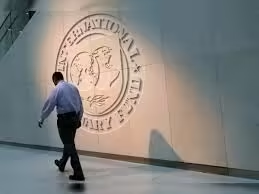The wave of sovereign defaults following the COVID-19 pandemic appears to have peaked, with countries like Ghana, Sri Lanka, and Zambia completing years of difficult debt restructuring. However, the International Monetary Fund (IMF) and other organizations are now sounding alarms over a looming liquidity crisis that could undermine progress in emerging economies, hinder climate change efforts, and foster distrust in both governments and Western institutions.
This pressing issue is a central topic at the IMF World Bank autumn meetings currently underway in Washington, D.C. Western nations are increasingly hesitant to provide financial assistance, complicating efforts to address the liquidity shortfall facing many low- and middle-income countries.
Christian Libralato, a portfolio manager at RBC BlueBay, noted the challenges many nations face, stating, “For many, debt service has grown, borrowing has become more expensive, and external sources have become less certain.” In light of this, the U.S. Treasury’s chief economic diplomat has advocated for innovative solutions to offer short-term liquidity support to prevent further debt crises in these nations.
The Global Sovereign Debt Roundtable, which convenes representatives from various countries, private lenders, the World Bank, and the G20, is also addressing the issue and will discuss it during their meeting in Washington on Wednesday.
However, Vera Songwe, chair of the Liquidity and Sustainability Facility—a group dedicated to reducing debt costs for African nations—expressed concerns that existing solutions lack the necessary scale and speed. She remarked, “Countries are avoiding education, health, and infrastructure expenditures to service their debt. Even in advanced economies, there are stresses in the system.”
The Capital Challenge
Data from the non-profit advocacy group ONE Campaign reveals that in 2022, 26 countries, including Angola, Brazil, Nigeria, and Pakistan, spent more on servicing external debts than they received in new external financing. Many of these nations had initially gained access to bond markets about a decade ago, leading to substantial payment obligations that coincided with rising global interest rates, which have since made affordable refinancing increasingly difficult.
ONE estimates that, as of 2023, net financial flows to developing countries have turned negative, a conclusion supported by experts at the Finance for Development Lab. This trend raises serious concerns about the economic stability and development prospects of these nations moving forward.



